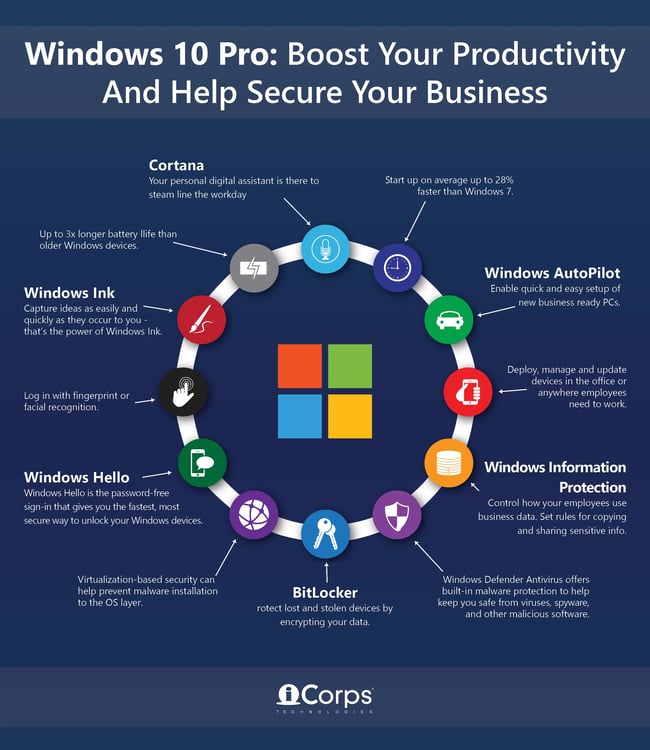18 Ways to Speed Up Windows 10 for a More Efficient System

Unlock the secrets to supercharging your Windows 10 experience with these 18 tips and tricks for a faster system now.
Table of Contents
Are you tired of your Windows 10 system running slow and sluggish? Is your productivity being hindered by long load times and unresponsive apps? Fear not, as in this blog post, we will explore 18 ways to speed up Windows 10 for a more efficient and enjoyable user experience. From optimizing app management and settings to enhancing gaming performance and system maintenance, these tips and tricks will help you get the most out of your Windows 10 operating system.
Antivirus and Security
One of the first steps in speeding up your Windows 10 system is ensuring that it is protected from malware and cyber threats. Installing a reliable antivirus software is crucial for maintaining system security. Look for reputable antivirus programs that offer real-time protection, automatic updates, and scheduled scans to keep your system safe at all times.
Aside from antivirus software, be sure to regularly update your system with the latest security patches and updates from Microsoft. These updates address vulnerabilities and bugs that could potentially slow down your system or compromise its security.
App Management and Settings
Managing your apps and customizing settings can significantly impact the performance of your Windows 10 system. Start by uninstalling any unnecessary or unused apps to free up space and resources. You can do this by going to the Control Panel or Settings and selecting "Apps & Features" to view a list of installed apps.
Next, customize your settings to optimize your workflow and improve efficiency. Adjust settings such as background app permissions, notification preferences, and startup programs to reduce unnecessary background processes and speed up system boot time. You can also personalize your system settings to suit your preferences and enhance productivity.
Gaming and Entertainment
If you are a gamer or enjoy multimedia entertainment on your Windows 10 system, there are several ways to enhance your experience and speed up performance. Ensure that your graphics drivers are up to date to maximize gaming performance and compatibility with the latest games and applications.

Image courtesy of via Google Images
Additionally, utilize the built-in Game Mode feature in Windows 10 to optimize system resources and prioritize gaming performance. You can access Game Mode by pressing Windows key + G while in a game to enable this feature and unlock a smoother gaming experience.
System Optimization and Maintenance
To further speed up your Windows 10 system, consider utilizing the Windows 10 media creation tool for system recovery and reinstallation. This tool allows you to create a bootable USB drive or DVD to reinstall Windows 10 in case of system crashes or issues.
| Ways to Speed Up Windows 10 for a More Efficient System |
|---|
| 1. Disable Startup Programs |
| 2. Clean Up Disk Space |
| 3. Disable Special Effects |
| 4. Update Your System Regularly |
| 5. Disable Unnecessary Services |
| 6. Optimize Power Settings |
| 7. Add More RAM |
| 8. Disable Background Apps |
| 9. Adjust Virtual Memory |
| 10. Use Solid-State Drive (SSD) |
| 11. Perform Disk Cleanup |
| 12. Defragment Your Hard Drive |
| 13. Disable Search Indexing |
| 14. Uninstall Unnecessary Programs |
| 15. Disable Windows Defender |
| 16. Use a Third-Party Antivirus Program |
| 17. Disable Remote Desktop |
| 18. Update Graphics Drivers |
Another effective way to optimize your system is by using debloating techniques to remove unnecessary pre-installed software and bloatware that can slow down your system. You can use third-party debloating tools or manually uninstall unnecessary programs through the Control Panel or Settings.
Backup and Recovery
Backing up your important files and creating system images are essential steps in maintaining a speedy and reliable Windows 10 system. Use the built-in Backup and Restore feature in Windows 10 to schedule regular backups of your files, folders, and settings to prevent data loss in case of hardware failure or system crashes.
If your system encounters issues or crashes, you can use system recovery options such as System Restore or Reset this PC to restore your system settings to a previous working state. These features can help troubleshoot system problems and restore system stability without losing your data.
By following these 18 tips and tricks, you can speed up your Windows 10 system and enjoy a more efficient and productive computing experience. Whether you are a casual user, a gamer, or a tech enthusiast, these optimizations and tweaks will help you get the most out of your Windows 10 operating system.
Remember to regularly update your system, maintain good security practices, and optimize your settings and apps to keep your Windows 10 system running smoothly and efficiently. With a little time and effort, you can transform your sluggish system into a fast and responsive powerhouse that meets all your computing needs.
FAQ Section
How can I speed up my Windows 10 system?
You can speed up your Windows 10 system by disabling startup programs, cleaning up disk space, updating system regularly, disabling unnecessary services, optimizing power settings, adding more RAM, and more.
Is it important to update my graphics drivers for gaming on Windows 10?
Yes, updating your graphics drivers is crucial for maximizing gaming performance and compatibility with the latest games and applications on Windows 10.
How can I back up my files on Windows 10?
You can back up your files on Windows 10 by using the built-in Backup and Restore feature to schedule regular backups of your important files, folders, and settings.
Why is antivirus software important for my Windows 10 system?
Antivirus software is essential for protecting your Windows 10 system from malware and cyber threats, ensuring system security with real-time protection, automatic updates, and scheduled scans.
Generated by Texta.ai Blog Automation


